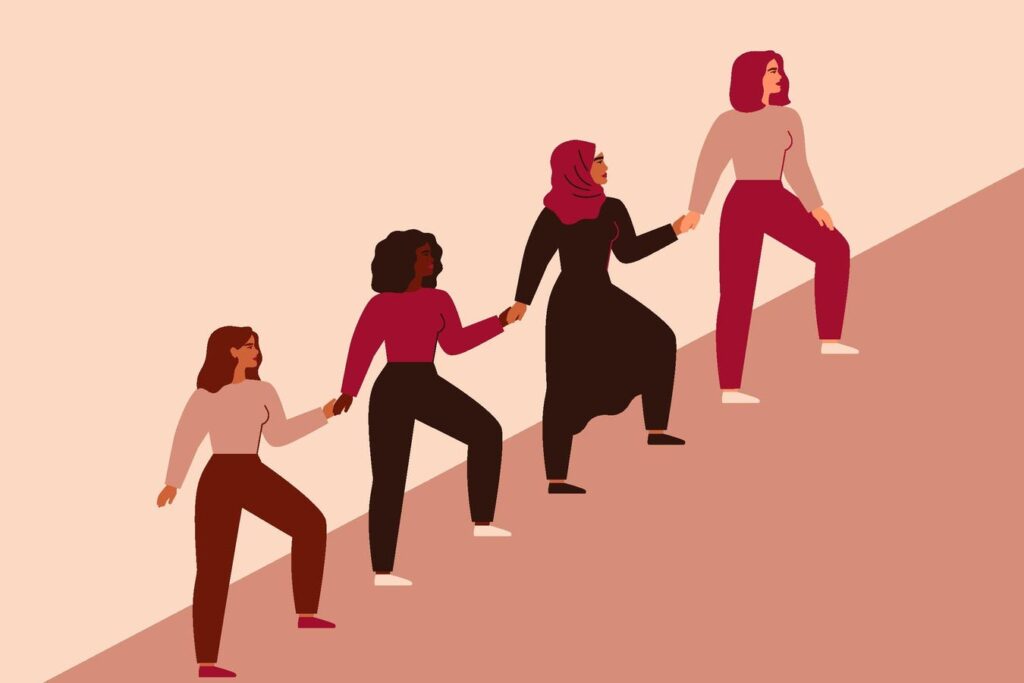

Enabling women is a more powerful act than empowering them. It provides opportunities and… [+] Exposure helps more than motivational speeches.
Getty
Discussions around women’s empowerment have garnered much attention and have become catchphrases commonly used in corporate boardrooms and societal discourse, but as organizations strive to promote diversity and inclusion, it’s important to examine whether the concept of women’s empowerment is truly effective or whether it has unintentionally obscured potential for change.
Instead of simply empowering women, organizations should shift their focus to a more dynamic and action-oriented approach: Activating Women As reported by Statista, the average score on the global Women Empowerment Index (WEI) is 0.607, which means that women globally are only achieving 60% of their potential.
“When women demonstrate their power, [and artists]”Sometimes, it stops there,” Timea Faulkner, founder of SheROCKS and The State of Fem Art, said in a phone interview. “You get motivated when you hear a speech or a podcast. You get championed and you hear that you can do great things in the world. You get an education and receive information that can help you take your business or artistry to the next level, but if you don’t have the resources to actually move forward with what you’re empowered to do, it’s all meaningless.”
Timea Faulkner, Founder and CEO, The State of Fem Art
Krista Booth
Working in the creator economy, Faulkner witnessed too many empty gestures of empowerment. SheROCKS began in her parents’ church basement, driven by frustration with the inequality of women in the visual and performing arts. She began hosting local events to spotlight artists. During the pandemic, the events pivoted to virtual galleries, digitizing artwork for visual artists and providing a platform for performing artists to engage with galleries. She built a platform to engage partners, sponsors, and creators.
By redefining our perspective and going beyond symbolic gestures, we can pave the way for a deeper and more sustainable impact on gender equality in the business sphere.
The first major women’s rights movement took place in 1848 and is commonly known as the Seneca Falls Convention. The early women’s rights movement was centered around activism and led to major advances in gender equality, but over the past century, the concept of women’s rights has been transformed into a multi-million dollar industry.
Through conferences, group coaching, and the proliferation of social media accounts, the women’s empowerment field has evolved beyond mere movement into a profitable business. While promising better for women, these efforts sometimes fall short of their promises.
Enabling women in business requires going beyond traditional notions of empowerment to take a more dynamic, action-oriented approach. Rather than simply providing support and opportunities, activation seeks to engage, mobilize and elevate women to positions of influence and leadership. It focuses on creating an environment where women are actively involved in decision-making and innovation, rather than being passive recipients of empowerment efforts. The goal is to enable women to fully utilize their skills, talents and potential, creating a more inclusive and equitable business environment.
“Activation is intentional resource,” Faulkner explains. “For me, it’s intentionally providing resources to women artists. Empowerment is providing a platform and celebrating people. For example, providing resources would be buying a digital unit. [from the performers or artists headlining on the platform]”Instead of just streaming, we buy an artist’s units in bulk and give them away for free to our audience to get that initial engagement. So we’re connecting new fans to their music at no cost to the fans. And we’re empowering the artists because digital units are important to them.”
Timea Faulkner speed networking at SheROCKS Power Brunch & Mixer in Lavie DC
Krista Booth
Though competition among female executives has slowed, jealousy still exists among some, making them hesitant to appoint other women. Social media plays a major role in comparing oneself to others. With more opportunities given to women, the competition will decrease. This scarcity mentality will shift to a collaborative effort.
Related Posts:
Forbes Your Self-Esteem is Your Greatest Asset During a Career Transition by Cheryl Robinson
Companies can incorporate an invigorating ethos and work environment into their empowerment strategies by providing the necessary personal development training, a safe space for women employees to take risks, and the right mentorship and sponsorship. Through these types of programs and organizations, women feel more visible and valued, and are more willing to give back.
“Imposter syndrome is the need to compete, to be better, to prove you’re the best, even if you’re competent in your industry or creative field and you see how quickly others are moving,” concludes Faulkner. “It keeps us from reaching out to others and understanding that there’s no limit to what we can achieve if we create, connect and collaborate. If we stay in our own shells and boxes, we stay small. But what if we started reinvesting in each other? And then so many small women-owned businesses and so many small women’s ventures and creative endeavors become big women-owned businesses and women’s endeavors.”
Tara Thomas Agency stands at the forefront of the entertainment industry, with years of experience dedicated to nurturing the most exceptional talents and successful acts.